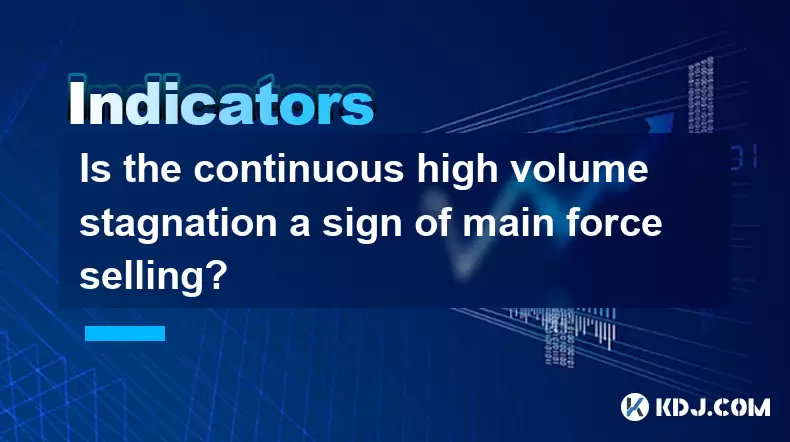-
 Bitcoin
Bitcoin $118,698.3676
0.16% -
 Ethereum
Ethereum $3,428.4877
5.97% -
 XRP
XRP $3.2496
9.52% -
 Tether USDt
Tether USDt $1.0002
0.00% -
 BNB
BNB $725.6930
4.36% -
 Solana
Solana $174.8923
4.52% -
 USDC
USDC $0.9997
-0.02% -
 Dogecoin
Dogecoin $0.2139
6.02% -
 TRON
TRON $0.3155
4.62% -
 Cardano
Cardano $0.8045
7.12% -
 Hyperliquid
Hyperliquid $46.6582
-1.72% -
 Stellar
Stellar $0.4676
0.80% -
 Sui
Sui $4.0143
0.38% -
 Chainlink
Chainlink $17.1546
2.97% -
 Hedera
Hedera $0.2458
3.27% -
 Bitcoin Cash
Bitcoin Cash $496.5967
-0.06% -
 Avalanche
Avalanche $22.8813
3.13% -
 Shiba Inu
Shiba Inu $0.0...01439
3.42% -
 UNUS SED LEO
UNUS SED LEO $8.8389
0.42% -
 Toncoin
Toncoin $3.2113
2.82% -
 Litecoin
Litecoin $101.2646
4.24% -
 Polkadot
Polkadot $4.2262
2.32% -
 Monero
Monero $340.4295
2.92% -
 Pepe
Pepe $0.0...01365
2.92% -
 Uniswap
Uniswap $8.9702
-2.78% -
 Bitget Token
Bitget Token $4.7675
2.00% -
 Dai
Dai $0.9998
-0.02% -
 Ethena USDe
Ethena USDe $1.0003
-0.04% -
 Aave
Aave $324.6394
-2.11% -
 Bittensor
Bittensor $433.6051
-0.88%
Is the continuous high volume stagnation a sign of main force selling?
High volume stagnation in crypto often signals main force selling or accumulation, revealing hidden market intentions despite sideways price action.
Jun 29, 2025 at 04:01 pm

Understanding High Volume Stagnation in Cryptocurrency Trading
In the context of cryptocurrency trading, high volume stagnation refers to a situation where trading activity remains consistently high, but the price of an asset shows little to no movement over a certain period. This phenomenon often raises questions among traders and investors about the underlying intentions of large market players, commonly referred to as "main forces" or "whales."
When such a pattern occurs, it's important to understand that high volume without directional price movement can indicate several things. It may suggest that significant selling pressure is being met with strong buying interest, effectively balancing out the market forces. Alternatively, it could reflect a consolidation phase where large holders are redistributing their positions.
What Does Main Force Selling Look Like?
Identifying whether main force selling is occurring during high volume stagnation requires a closer look at order book dynamics and trade execution patterns. Large players typically do not dump their holdings all at once, as doing so would cause sharp price drops and reduce the value of their own assets.
Instead, main forces tend to sell gradually, often using techniques like iceberg orders or multiple smaller trades spread across different exchanges and time intervals. These methods help mask the true size of their sell orders. In the case of high volume stagnation, this behavior might be visible through consistent large trades executed at or near the current market price, without pushing the price significantly lower.
How Can On-Chain Metrics Help Identify Institutional Activity?
To assess whether main force selling is taking place, many analysts turn to on-chain metrics. Tools such as blockchain explorers, exchange inflow/outflow data, and wallet tracking platforms provide insights into how much supply is moving between wallets, especially those associated with exchanges or known institutional addresses.
For instance, if there’s a noticeable increase in the number of coins being transferred from cold storage to exchange wallets, it might signal that large holders are preparing to offload their holdings. Monitoring metrics like SOPR (Spent Output Profit Ratio) or Net Unrealized Profit/Loss (NUPL) can also offer clues about whether long-term holders are realizing gains, which could align with a selling phase.
Technical Indicators That May Signal Distribution
From a technical analysis perspective, certain indicators may help identify whether high volume stagnation is masking a distribution phase by main forces:
- Volume Profile: A rising volume profile at a specific price level suggests that a lot of trades are happening around that zone, potentially indicating accumulation or distribution.
- Order Block Analysis: Institutional traders often leave behind identifiable order blocks on higher timeframes. Observing how price reacts when revisiting these zones can hint at whether large players are still holding or exiting.
- Moving Averages and Divergences: If the price remains flat while key moving averages start to flatten or turn bearish, it could point to weakening momentum. Additionally, divergence between price action and volume or momentum oscillators (like RSI or MACD) might suggest hidden selling pressure.
These tools should be used together rather than in isolation to form a clearer picture of what’s happening beneath the surface of the chart.
Psychological and Behavioral Aspects of Market Participants
It's crucial to consider the behavioral psychology behind high volume stagnation. Retail traders often interpret sustained high volume as a sign of imminent breakout, either up or down. However, main forces may exploit this expectation by creating artificial volatility or trapping traders in false breakouts.
This kind of manipulation is sometimes referred to as “baiting” or “shaking out weak hands.” During these phases, large players sell incrementally while triggering stop-losses or encouraging panic selling among smaller traders. The result is a sideways market with intense volume, giving the illusion of indecision when, in fact, a deliberate redistribution is underway.
How to Protect Yourself From Potential Main Force Selling
If you suspect that main force selling is happening during high volume stagnation, here are some protective measures you can take:
- Monitor exchange balances closely for sudden increases in outflows.
- Use tight stop-losses and avoid over-leveraging your positions.
- Keep an eye on whale transaction alerts via on-chain analytics tools.
- Be cautious when trading during extended consolidation periods with unusually high volume.
- Consider scaling out of positions gradually rather than waiting for a potential breakdown.
These steps can help mitigate risk exposure if large players are indeed unloading their holdings quietly.
Frequently Asked Questions
Q: How can I differentiate between healthy consolidation and main force selling?
Healthy consolidation usually comes with decreasing volume and stable support levels. In contrast, main force selling often coincides with sustained high volume and subtle signs of distribution, such as repeated rejections at resistance levels or increasing exchange inflows.
Q: Are there specific tools or platforms that track main force activities?
Yes, platforms like Glassnode, CryptoQuant, Whale Alert, and Santiment provide analytics and alerts related to large transactions, exchange flows, and on-chain behaviors that can help identify institutional activity.
Q: Should I always assume high volume stagnation means selling pressure?
No, high volume stagnation can also indicate strong support levels forming or active accumulation by large buyers. It’s essential to cross-reference this pattern with other indicators and on-chain signals before drawing conclusions.
Q: Can retail traders profit from identifying main force selling?
While challenging, experienced traders can use this knowledge to adjust their strategies—such as tightening stops or hedging positions—to minimize losses or even benefit from short-term volatility surrounding such events.
Disclaimer:info@kdj.com
The information provided is not trading advice. kdj.com does not assume any responsibility for any investments made based on the information provided in this article. Cryptocurrencies are highly volatile and it is highly recommended that you invest with caution after thorough research!
If you believe that the content used on this website infringes your copyright, please contact us immediately (info@kdj.com) and we will delete it promptly.
- Silver Breaks 14-Year High: What's Driving the Rally?
- 2025-07-17 22:50:13
- Ozak AI, Stellar (XLM), and Solana (SOL): The New Crypto Watchlist Stars
- 2025-07-17 23:50:12
- Grok AI, Meme Coins, and Dogecoin: What's the Hype in 2025?
- 2025-07-17 23:10:11
- Meme Coins, AI Tokens & Whale Accumulation: What's Hot in Crypto?
- 2025-07-17 23:15:11
- C2 Blockchain, DOG Coins, and Acquisition: A Meme-Native Bitcoin Asset
- 2025-07-17 20:30:12
- DeFi Evolution: Hyperion, HYPE Token, and the Hyperliquid Ecosystem
- 2025-07-17 21:30:12
Related knowledge

Advanced RSI strategies for crypto
Jul 13,2025 at 11:01am
Understanding the Basics of RSI in Cryptocurrency TradingThe Relative Strength Index (RSI) is a momentum oscillator used to measure the speed and chan...

Crypto RSI for day trading
Jul 12,2025 at 11:14am
Understanding RSI in the Context of Cryptocurrency TradingThe Relative Strength Index (RSI) is a momentum oscillator used to measure the speed and cha...

Crypto RSI for scalping
Jul 12,2025 at 11:00pm
Understanding RSI in the Context of Crypto TradingThe Relative Strength Index (RSI) is a momentum oscillator widely used by traders to measure the spe...

What does an RSI of 30 mean in crypto
Jul 15,2025 at 07:07pm
Understanding RSI in Cryptocurrency TradingRelative Strength Index (RSI) is a momentum oscillator widely used in cryptocurrency trading to measure the...

What does an RSI of 70 mean in crypto
Jul 13,2025 at 06:07pm
Understanding the RSI Indicator in Cryptocurrency TradingThe Relative Strength Index (RSI) is a widely used technical analysis tool that helps traders...

Does RSI work in a bear market for crypto
Jul 16,2025 at 01:36pm
Understanding RSI in Cryptocurrency TradingThe Relative Strength Index (RSI) is a momentum oscillator used by traders to measure the speed and change ...

Advanced RSI strategies for crypto
Jul 13,2025 at 11:01am
Understanding the Basics of RSI in Cryptocurrency TradingThe Relative Strength Index (RSI) is a momentum oscillator used to measure the speed and chan...

Crypto RSI for day trading
Jul 12,2025 at 11:14am
Understanding RSI in the Context of Cryptocurrency TradingThe Relative Strength Index (RSI) is a momentum oscillator used to measure the speed and cha...

Crypto RSI for scalping
Jul 12,2025 at 11:00pm
Understanding RSI in the Context of Crypto TradingThe Relative Strength Index (RSI) is a momentum oscillator widely used by traders to measure the spe...

What does an RSI of 30 mean in crypto
Jul 15,2025 at 07:07pm
Understanding RSI in Cryptocurrency TradingRelative Strength Index (RSI) is a momentum oscillator widely used in cryptocurrency trading to measure the...

What does an RSI of 70 mean in crypto
Jul 13,2025 at 06:07pm
Understanding the RSI Indicator in Cryptocurrency TradingThe Relative Strength Index (RSI) is a widely used technical analysis tool that helps traders...

Does RSI work in a bear market for crypto
Jul 16,2025 at 01:36pm
Understanding RSI in Cryptocurrency TradingThe Relative Strength Index (RSI) is a momentum oscillator used by traders to measure the speed and change ...
See all articles

























































































